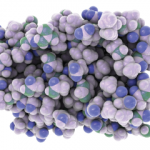Molecular Fingerprints
A study of 158 children with lupus, followed for about four years, suggests the tantalizing possibility of establishing molecular fingerprints that could eventually be used to guide therapy. Researchers found certain genes were less expressed and some more heavily expressed. When they grouped these genes, they found a high expression of interferon response in most, a plasmablast signature in about a quarter of the patients and a neutrophil response in about half. This led to observations related to their clinical picture: For example, the sicker a patient was, the more robust plasmablast signature they tended to have.5
The possibilities brought to mind by these data are enticing, Dr. Buyon said.
“You can begin to now say, ‘I’m going to do genotyping, I’m going to do blood modules, and now I can pick out the treatment that is precise for that patient,’” she said. “Are we there yet? You’re going to see that in the next few years—I really do think so.”
New Clues Regarding Flare
In other recent work, researchers have uncovered new clues regarding flare. A longitudinal study of SLE patients looking at 52 soluble mediators found that T helper 1 and 2 cells (Th1 and Th2), interferon and tumor necrosis factor were all associated with flare in SLE patients, and transforming growth factor-ß (TGFß) and interleukin (IL) 10 seemed to be protective and associated with no flare.6,7
The Biomarkers of Lupus Disease (BOLD) study involved patients who were doing poorly, but not severely so, before enrollment. Their drugs were stopped, they were given steroids and improved, and blood was drawn in search of flare predictors.8
Among patients who flared early, elevated interferon was predictive of this early flare. These patients also had elevated inflammatory markers and suppressed T cells. In the late flare group, researchers saw suppressed inflammation, a decreased monocyte signature and slightly elevated T cells.
Compared to the late flare group, the early flare group also had significantly higher frequencies of activated CD11b-positive neutrophils and monocytes, and activated CD86-naive B cells.
Such findings, Dr. Buyon said, are “beginning to tell us there are differences in not only who’s going to flare, but when somebody is going to flare.”
Predicting Disease Course in LN
Other findings have been enlightening in predicting disease course in lupus nephritis (LN). For example, serum albumin levels at 12 months after biopsy can predict adverse renal outcomes at four years.9
In a multi-center study Dr. Buyon helped lead, researchers used single-cell RNA sequencing to assess renal biopsies from patients with LN.10
“We were able to show that the tubular cells from patients with lupus nephritis expressed higher levels of interferon response genes than normal, healthy kidneys. And not only that, it actually predicted … non-response vs. response at six months,” she said. “What’s really remarkable to us is that the keratinocytes from these patients also expressed interferon genes and may be a helpful adjunct in looking at what’s going on in the kidney.”
This study, she said, is a sign of the power of technology, which is part of the reason for her optimism in finding greatly improved lupus biomarkers in the not-too-distant future.
“The holy grail is that biomarkers will fill certain promises,” she said. “They’ll aid the clinician in managing the patient, they’ll help you sort out phenotypic heterogeneity. It’ll inform you a little bit about pathogenesis and provide targets for therapy.”

